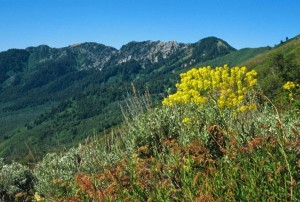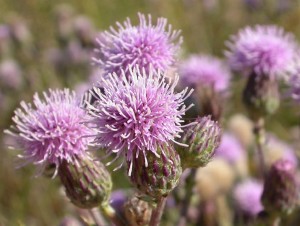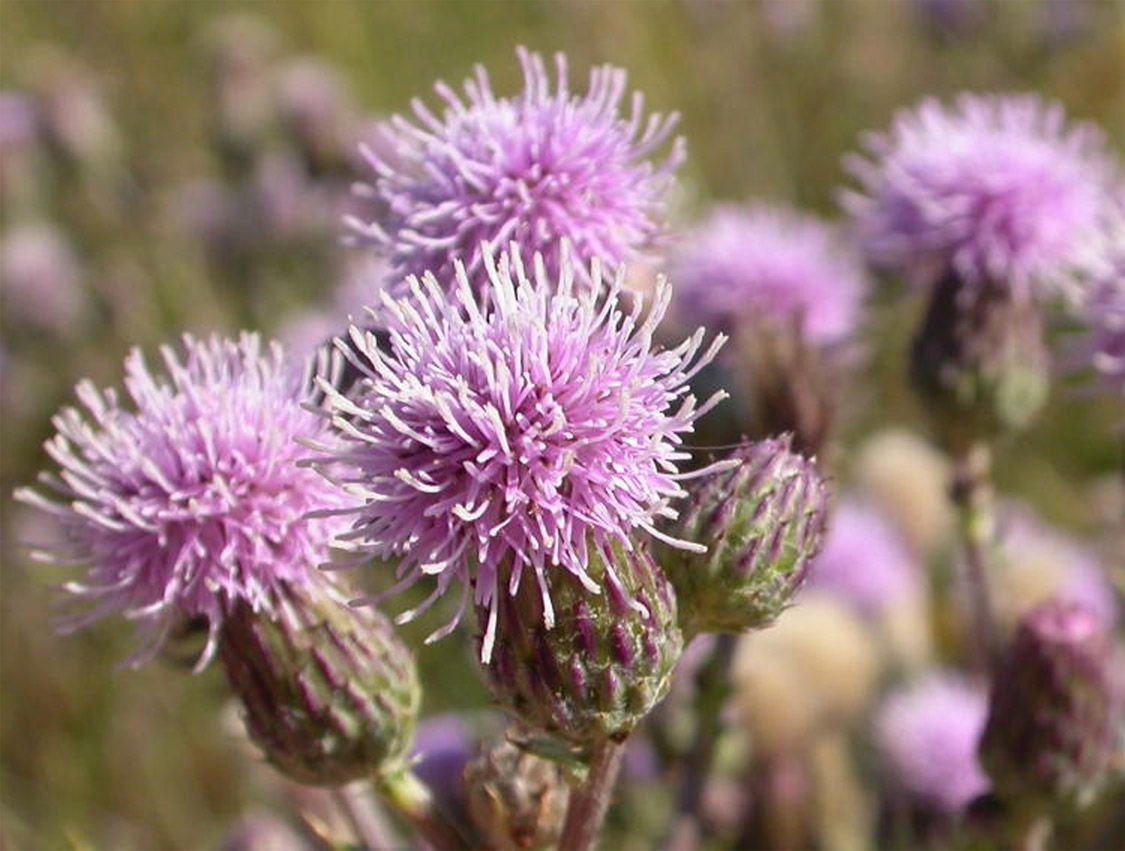Invasion is not a happy word. It inspires images of marauders with broad swords storming castles to conquer and pillage. Nature has its own definition of invaders – plants that are carried from one area to another and then crowd out native species.
Utah has its share of invasive species, some brought in by accident and others deliberately planted. Emily Martin of the Ogden Nature Center has seen her share of these warrior weeds. She is an intern there in charge of environmental education and habitat restoration.

Dyer’s woad is a weed found in northern Utah. Originating in Central and Western Asia, the roots were used in colonial times to make an indigo dye. Now it is listed as a “Class B noxious weed.” It is a member of the mustard family and starts as a small rosette on the ground the first year and in its second year blooms as a large yellow flower. In this stage it goes to seed and can spread as many as 500 seeds per flower. The seeds are hardy. Even those that don’t sprout can stay viable for up to 30 years. It has no natural predator. This pervasive plant spreads and chokes out native plants.
According to Martin strategies to control the plan include using chemicals in areas with less people and mechanical control along trails in the foothills. That means digging it up down to the root. If most of the root is removed the plant will die.

Thistles are another category of invaders. They include Scottish, Canadian, musk and bull. Utah has some native thistles, but many that are seen along the trails are invaders. These thistles are good at self preservation. The Scottish thistle reaches eight feet at adulthood and the capacity to spread 4,000 seeds per flower. The Canadian is a perennial and so will return every year. It doesn’t have a tap root, but instead sends out rhizomes that can spread underground creating a huge network of interconnected thistles. Consequently they can’t be dug up. The gall fly will weaken them and the only other alternative is control by herbicide.
Houndstongue is a particularly sneaky invader. It produces a red/purple flower and lots of tiny seeds having velcro-like properties. The seeds will stick to anything and are easily spread to new locations. Houndstongue not only can choke out native species it can be poisonous to wildlife when they consume it.
Utah’s wetlands also have non-native plants such phragmites that choke out native wetland plants and thus hurt migratory birds that depend on native plants for food.
Utah has been invaded from the foothills, to grasslands to wetlands. The biggest threat is that when native species are replaced or choked out it creates a monoculture with a distinct lack of biodiversity. Not only are native plants impacted, but it moves all through the chain. “Not just plants are affected, but wildlife and the whole biosphere as well. Invasive species can change the soil ph and by changing soil chemistry it affects everything,” Martin says.
Many groups, including the Ogden Nature Center, organize get-togethers to help eradicate invasive species. In the war against invasive species they accept any and all volunteers. For more information contact info@ogdennaturecenter.org.






